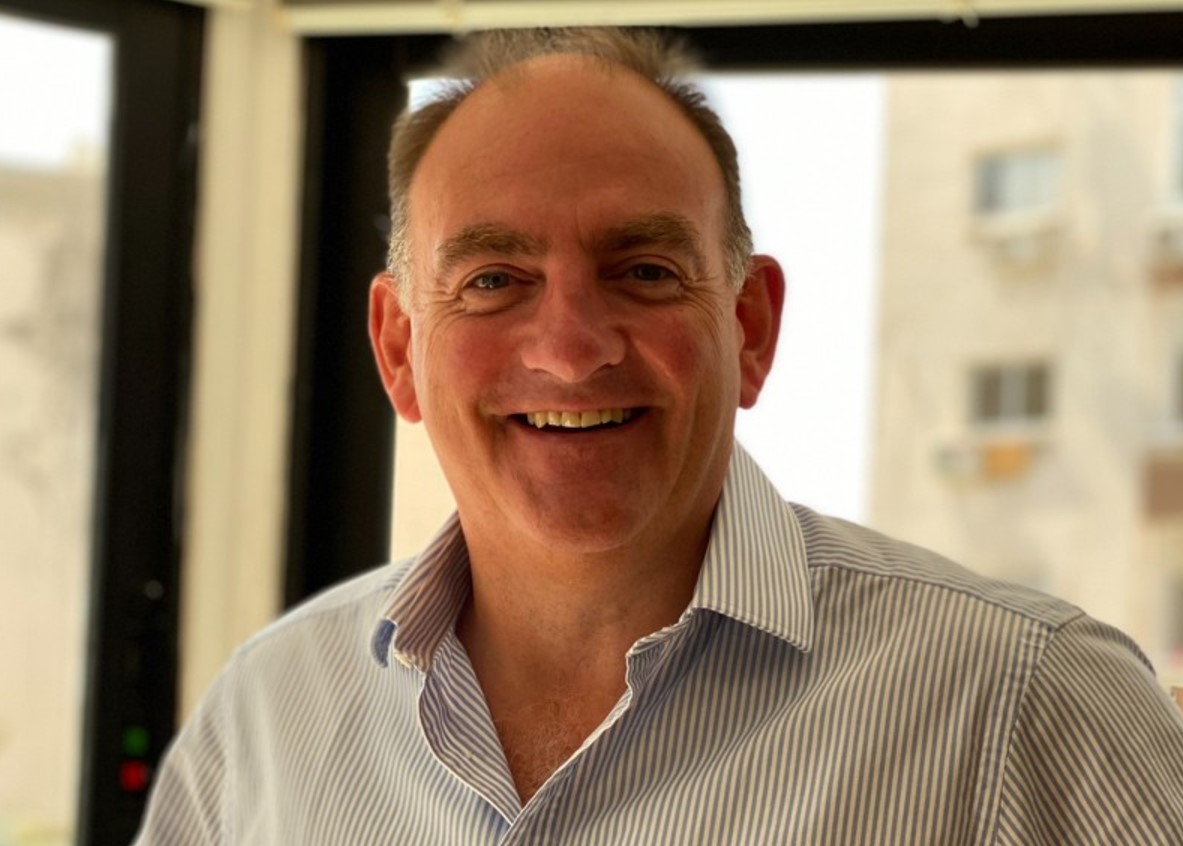Mastering the art of financial strategy in a changing world
Antony Barnett, Chief Executive Officer of Limassol-based Network Financial Services (NFS), is no stranger to the delicate balancing act of financial planning.
With a career that spans years of experience, Barnett is at the helm of a company known for offering tailored investment advice across the European Union.
The company’s ethos is rooted in designing investment strategies that align with each client’s unique financial goals and risk tolerance, ensuring that clients not only understand their options but also feel confident in their investment decisions.
Understanding clients’ needs
For Barnett, the key to successful financial advice is knowing the client.
“First of all, we have to know our customer,” he explains.
“To achieve this, we incorporate a fact-finding process.”
This process includes evaluating a client’s attitude towards risk and assessing their total wealth – taking into account income, debts, and the amount they wish to invest.
A critical part of this assessment involves understanding their risk appetite, which reflects both their tolerance for loss and the potential for gain.
“We determine how much they want to invest and their attitude to risk, which is matched appropriately,” Barnett says.
“For example, a client might indicate that they’re comfortable with a loss of up to 20 per cent of their portfolio without altering their strategy. However, if that loss were to reach 21 per cent, we would ask: ‘Would you buy more? Would you sell? What would you do?’”
This detailed questioning, Barnett explains, is essential to understanding a client’s true appetite for risk.
“These responses help us assess their true appetite for loss.”
Risk and age: tailoring investment strategies
One of the most critical factors in designing a financial plan is a client’s age. Barnett notes that risk appetite typically decreases as people get older.
“Younger investors generally have a higher risk tolerance,” he explains.
“Once we determine a client’s risk appetite, we assess the most suitable product for them, taking into account their country of residence and the tax benefits of specific products available.”
For example, clients living in Portugal, Spain, or France may benefit from tax-efficient compliant bonds.
These bonds act as a “wrapper” for investments, allowing them to grow while reducing tax liabilities.
“In Cyprus, however, we would use an investment platform as the wrapper, given that Cyprus does not have capital gains tax or inheritance tax issues,” Barnett points out.
The structure of the portfolio itself is also vital. Barnett explains that clients are presented with a choice between active or passive funds.
Active funds are managed by individuals and come at a higher cost, but they involve active decision-making to identify the best-performing investments.
On the other hand, passive funds – like exchange-traded funds (ETFs) – track an index and are significantly cheaper, but lack the same degree of personalised decision-making.
“One example of an active fund we might recommend is Fundsmith,” Barnett shares.
“It’s managed by Terry Smith, focusing on value-based investments and holding a limited number of equities. We might allocate a portion of a client’s portfolio to such a fund.”
For clients with a medium risk profile, Barnett suggests a blend of multi-asset managed funds, possibly allocating 40 per cent to active funds and the remaining 60 per cent to ETFs.
“This approach typically results in a total fund cost of around 0.7 per cent per annum,” Barnett explains.
“On the other hand, a portfolio made up solely of ETFs could have a cost of between 0.15 per cent and 0.2 per cent per annum, whereas a portfolio consisting entirely of managed funds might incur costs of 1 per cent to 1.5 per cent per annum.”
The final mix of funds, Barnett stresses, is always tailored to the individual client’s needs, ensuring that the balance of costs and returns aligns with their goals.
Younger clients’ risk appetite
Barnett has a keen understanding of how younger clients approach investing. “Younger people typically take on higher levels of risk compared to older individuals,” he observes.
“Part of our role is not just to ask clients about their appetite for risk but to guide them on where their risk tolerance should ideally be.”
“If you have 20 years until retirement, you can afford to take greater risks than if you’re only five, three, or two years away from retiring,” he adds. “We conduct annual reviews with our clients, and during these reviews, we reassess their circumstances and risk tolerance.”
For Barnett, the approach to risk must always be aligned with specific financial objectives.
“For example, I’m 59 years old and plan to retire at 60 or 65. If my risk tolerance is rated at five or six out of seven, an adviser should recommend shifting towards lower-risk investments.”
This tailored, objective-based risk assessment ensures that each client’s portfolio is optimised for their long-term goals.
“This approach aligns with the general five-to-ten-year risk cycle and helps ensure my portfolio is in line with my retirement objectives,” he says.
Speculation vs long-term wealth creation
While many financial advisers may entertain speculative investment options, Barnett is clear in his stance.
“As for more speculative investment options, such as forex (FX), I see these as gambling rather than wealth creation,” he notes.
“Our focus is on estate creation and long-term wealth generation.”
Barnett expresses a personal preference for traditional, sustainable investments.
“We would not use more volatile or speculative investments for client portfolios such as cryptocurrencies, FX or derivatives which I don’t include within my own portfolio and these are the types of investments we would leave clients to dabble with themselves using money that they were prepared to lose,” he says.
“Our priority is the generation of sustainable wealth through the use of tried and tested traditional long-term investments,” he adds.
Selecting investment platforms and products
When asked about factors clients should consider when selecting between investment platforms and products like equities, trusts, or Investment Trusts, Barnett highlights the importance of both cost-effectiveness and regulatory compliance.
“We typically select mutual funds, regulated investment funds, or ETFs,” he says. “The investment platform is generally chosen based on price, and it must be EU-reportable.”
Cost, Barnett notes, is a significant consideration, especially for clients based internationally.
“We look for an EU-reportable investment platform that offers competitive pricing. Typically, we can find a platform with an annual cost of around 35 to 40 basis points. This cost is passed on to the client for holding their assets on the platform.”
However, Barnett explains that while international platforms tend to be more expensive than those in the UK due to market size, they can still provide excellent value.
“If I’m only paying 0.4 per cent per annum to have my assets held in one place, that’s a good deal,” he says.
But pricing isn’t the only factor in choosing a platform. Barnett stresses the importance of a platform having a functional back office, with which his firm can easily work.
“Because we are regulated by CySEC, I hold two licenses: an insurance license and an investment license,” he explains.
This regulatory framework requires Barnett’s firm to keep its insurance and investment businesses separate.
“If you were to visit our office upstairs, you would see the administration area for the insurance business. This is exclusive to the insurance license, as CySEC rules prohibit sharing premises between the two businesses.”
Though this requirement adds a nominal cost, Barnett understands the necessity for compliance.
“It’s frustrating because I could easily consolidate everyone on one floor, but unfortunately, we are required to use two.”
Investment advice and client relations
When it comes to his role as an adviser, Barnett is clear about the boundaries of his services.
“I do not provide discretionary services. This means I do not select or execute trades on behalf of clients,” he says.
Instead, his firm provides recommendations, which clients must approve before any trades are made.
“I would contact you with recommendations, such as suggesting that you sell a particular asset,” Barnett explains.
For instance, he cites the US market, noting that, before the election, “there was a 70 per cent chance that Trump would win the election. If Kamala Harris won, he said, the market’s reaction was considered to be uncertain.”
For high-risk clients, he might recommend buying US assets, but for low-risk clients, he would advise against it.
Barnett again reiterates that the firm is focused on providing investment advice rather than executing trades.
“We are advisors, not managers,” he asserts. “Our focus is on daily, tradable, liquid, low-cost underlying funds. While managed funds do come with a premium, we still prioritise keeping costs low when selecting managed funds.”
Building a portfolio in the current environment
When discussing best practices for investors looking to build a portfolio, Barnett emphasises the importance of understanding one’s risk appetite and investment horizon. “
Growth is not a straight line from bottom left to top right,” he says, adding that while the journey might not be a smooth ride, the general trend should be upwards.
“For someone in their 40s, I would recommend a very different portfolio compared to someone in their 60s,” he continues. “A blend of active and passive investments is often ideal.”
For his clients, Barnett typically recommends a mix of 40 per cent active funds and 60 per cent passive funds, depending on their risk profile.
He stresses that over long periods, portfolio performance can vary significantly, even among skilled managers.
“If you give me 10 different multi-asset managers with a 10-year timeframe, their results will be very different at the end of that period,” Barnett says.
“After one year, their performance might be very different, but over 10 years, the differences are likely to be less significant.”
Barnett further explains that high-risk managers will likely outperform in periods of strong equity returns, while low-risk managers will fare better when returns are poor.
“In the long run, almost all of these managers, assuming they are competent, will fall within a very small percentage difference of each other over the 10-year period,” he notes.
Thoughts on the S&P 500
Barnett’s approach to investment also extends to his views on popular indices like the S&P 500.
When asked for his opinion on this index, he notes that for many investors, it offers a solid, passive investment option.
“If you don’t want to be very active, you might select something more passive, like an index fund,” he says.
He adds that trying to “pick winners” is often less effective than investing in a broad index. “Historically, over the last 20 years, the S&P index has delivered the best returns,” Barnett points out.
In his own pension portfolio, Barnett holds a variety of assets, including the S&P, FTSE, Japan, India and the MSCI Global Index Fund.
“However, the S&P has consistently been the top performer, always leading the way,” he shares.
Financial planning for major life goals
When it comes to financial planning for significant purchases, such as a home, or for long-term goals like retirement, Barnett emphasises the importance of starting with a detailed financial assessment.
“Significant purchases, such as a home, require a very different set of financial planning compared to wealth creation,” he explains.
His firm uses a financial questionnaire to break down income and expenditure, helping clients determine how much they should save.
“We always advise clients to have a reserve pot of money, which is a key part of our recommendations from the start,” Barnett stresses. “We ask, ‘Do you have a reserve fund?’ It’s essential for them to have one.”
When advising clients on saving, Barnett focuses on surplus money.
“If someone asks, ‘How do I save?’ my advice would be to put away two thousand pounds a month, and after a year, return to me, and we’ll invest that money on a platform,” he recommends.
The advantages of professional financial planning
When discussing the value of professional financial planning, Barnett emphasises the need for regulated and qualified advice.
“The most important thing I would say is that if you’re going to invest, you should be dealing with someone who is regulated to offer you the investment advice you need,” he stresses.
The key to effective planning, according to Barnett, lies in understanding a client’s unique situation.
“The advisor must take a snapshot of your current situation and then ask where you want to be in the future, and when those future dates are,” he explains.
Whether a client is planning for retirement in 20 years, or a newly married individual with no children just starting out in their career, the advice will be tailored accordingly.
Barnett points out that the level of expertise required to offer sound financial advice cannot be overstated.
“All of this comes down to experience, qualification, and regulation,” he notes.
He is particularly critical of those offering investment advice through insurance products in Cyprus, which he believes are often not subject to the same rigorous standards.
“I think there are many people in Cyprus who have an insurance license and give investment advice through insurance products. However, it’s not the same. It’s not the same level of regulation, and it’s not the same level of qualification.”
For Barnett, the comparison between his firm’s regulatory process and those operating outside of it is simple.
“We go through extensive processes, including monthly and annual audits, to satisfy CySEC’s regulations, rules, and requirements. These other individuals don’t.”
He challenges potential clients to consider the importance of regulation when seeking advice.
“If you knew what we had to do to meet regulatory standards and the qualifications we hold, versus someone who is unqualified, where would you prefer to go for advice?” Barnett firmly concludes:
“I have a license, and you should use my licensed services to achieve your goals, rather than dealing with someone who is unregulated.”
DIY investing: a cautious approach
While Barnett is a staunch advocate of professional financial advice, he acknowledges that DIY investing can work for some, provided it is approached with caution.
“Look, I think there is a place for it, but that should be ‘gamble money,’ not long-term investment money – unless, of course, you know you can manage it effectively,” he says.
He elaborates further on the risks of following others’ investment strategies without fully understanding their goals and approaches.
“You can mirror other people’s investment accounts, but do you know what their long-term goals are? Do you know what they’re doing when they plan to close their laptop and say, ‘No more’? Do you know all the details? What’s the lag between them making a purchase and you getting a notification? Are their investments speculative?”
Barnett advises clients who choose to dabble in DIY investing to keep it minimal.
“So, yes, DIY investing is fine, but do it with a small amount of money. Perhaps consider using the money you might spend on something like taking your wife out for dinner. Keep it minimal – not a huge amount.”
Emerging trends in investment and the role of technology
When asked about emerging trends in the investment world, Barnett highlights a growing awareness among clients of the importance of costs.
“I think the biggest challenge we’re going to face is clients becoming more aware of costs over the next 10 years,” he says.
“That’s a good thing, though, because cost will drive the market. People are starting to understand that they should be looking at costs.”
However, he also cautions that low-cost products, like ETFs, don’t always deliver the best value.
“ETFs are very low-cost, but they don’t always offer value, because value comes from a fund manager,” Barnett explains.
Looking further ahead, Barnett believes that technology will play a crucial role in reshaping the investment landscape.
“I believe tech is going to change everything. Yes, I think AI will have a significant impact,” he says, acknowledging the growing influence of artificial intelligence.
Barnett himself has explored the potential of AI, with one of his sons working in IT and using it daily.
“I’ve spent some time looking into AI – I’m not sure how this will reflect in my personal business, but I do think AI will change the global investing industry.”
Barnett is less certain about AI’s potential to replace financial experts, recognising both the opportunities and challenges it presents.
“At the moment, AI has a lag, doesn’t it?” he says, pointing out that AI is still developing, with much of its progress being closely monitored by governments and regulators.
“Yes, and that lag is being managed by governments, regulators, and as many people as they can get involved, because, otherwise, it could be dangerous.”
He acknowledges that while AI could significantly disrupt various industries, it will also create new opportunities.
“AI will take a lot of people’s jobs, but, like the industrial revolution, it will create jobs at the same time.”
Yet Barnett remains cautious about making definitive predictions. “I don’t know. I think that’s as good an answer as I can give you. It would be foolish of me to sit here and say, ‘This is going to happen, and that’s going to happen.’ I simply don’t know.”
Despite its impressive capabilities, Barnett admits that AI presents both excitement and fear in equal measure.
“AI is quite spectacular, yet it’s also scary at the same time,” he concludes.







Click here to change your cookie preferences